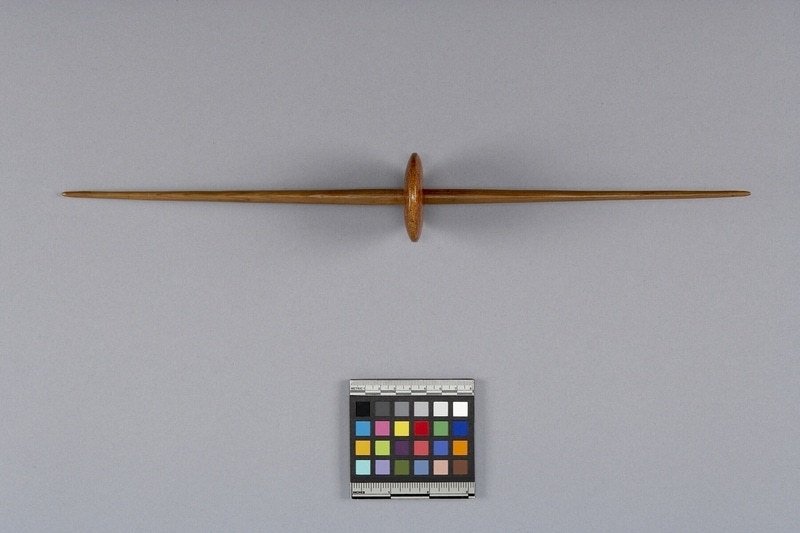Spindle Whorl Item Number: A2291 from the MOA: University of British Columbia


Description
Spindle consisting of a thin wooden shaft that tapers towards both ends, and a slightly rounded disc of dark coloured bone which comprises the whorl. The whorl is fixed at the middle of the shaft through a hole in the centre of the whorl.
History Of Use
Homer Barnett (1955) notes that spindle whorls used by the southern Coast Salish of British Columbia are larger than those used in the north, with a shaft that is twice as long as the whorl. In the north, fibres were spun on smaller whorls that were "twirled between the leg and palm (1955:118)." By contrast, the larger whorls used in the South were suspended from overhead. This arrangement created a tension in the roving. Johnson and Bernick (1986) report that traditionally several different techniques were used for turning the spindle, however, contemporary weavers now make use of a spinning machine that is similar in appearance to a treadle sewing machine.
Cultural Context
weaving; spinning
Item History
- Made in British Columbia, Canada ?
- Received from Unknown (Unknown)
What
Who
- Culture
- Coast Salish
- Received from
- Unknown (Unknown)
Where
- Holding Institution
- MOA: University of British Columbia
- Made in
- British Columbia, Canada ?
Other
- Condition
- good